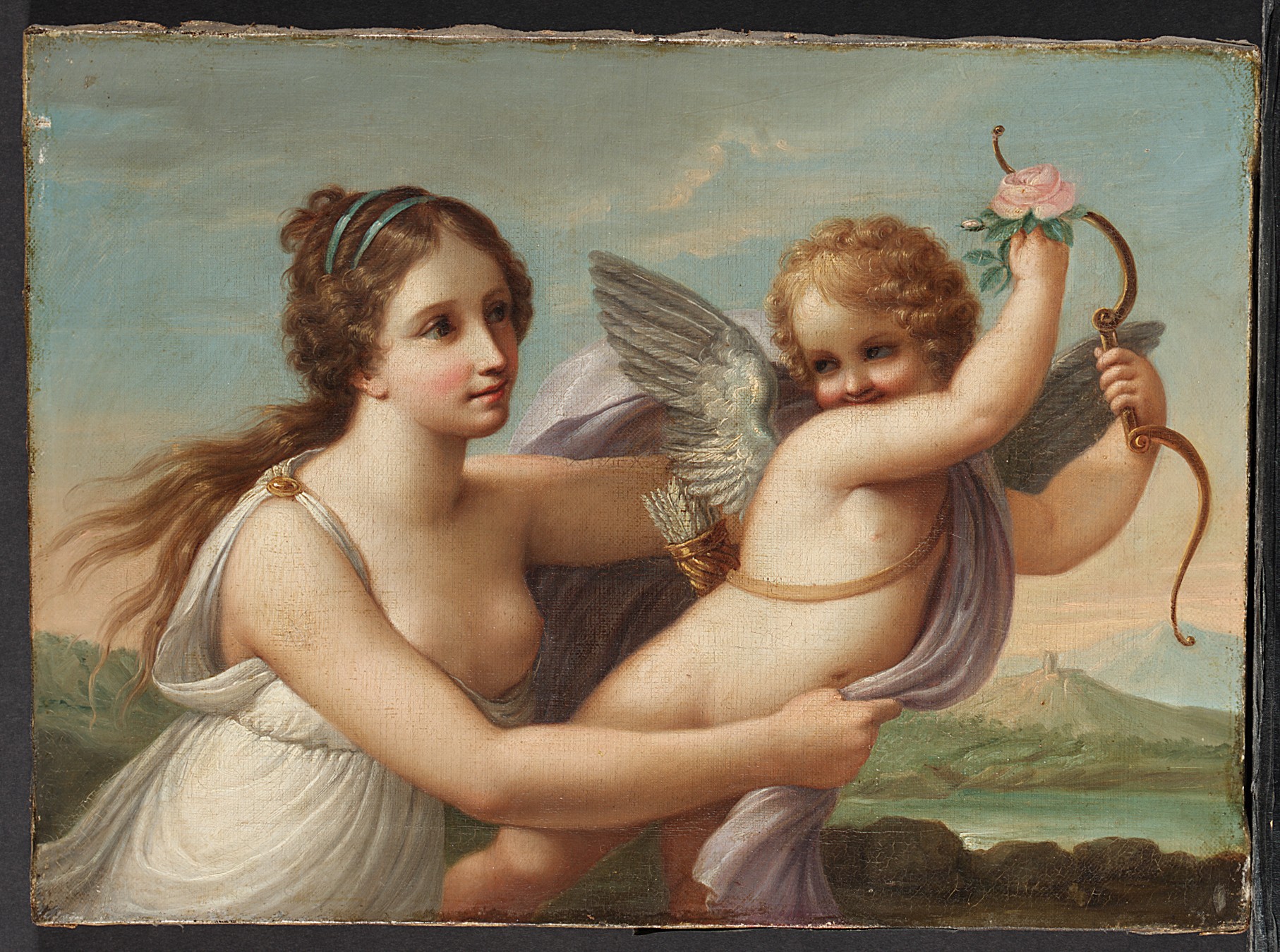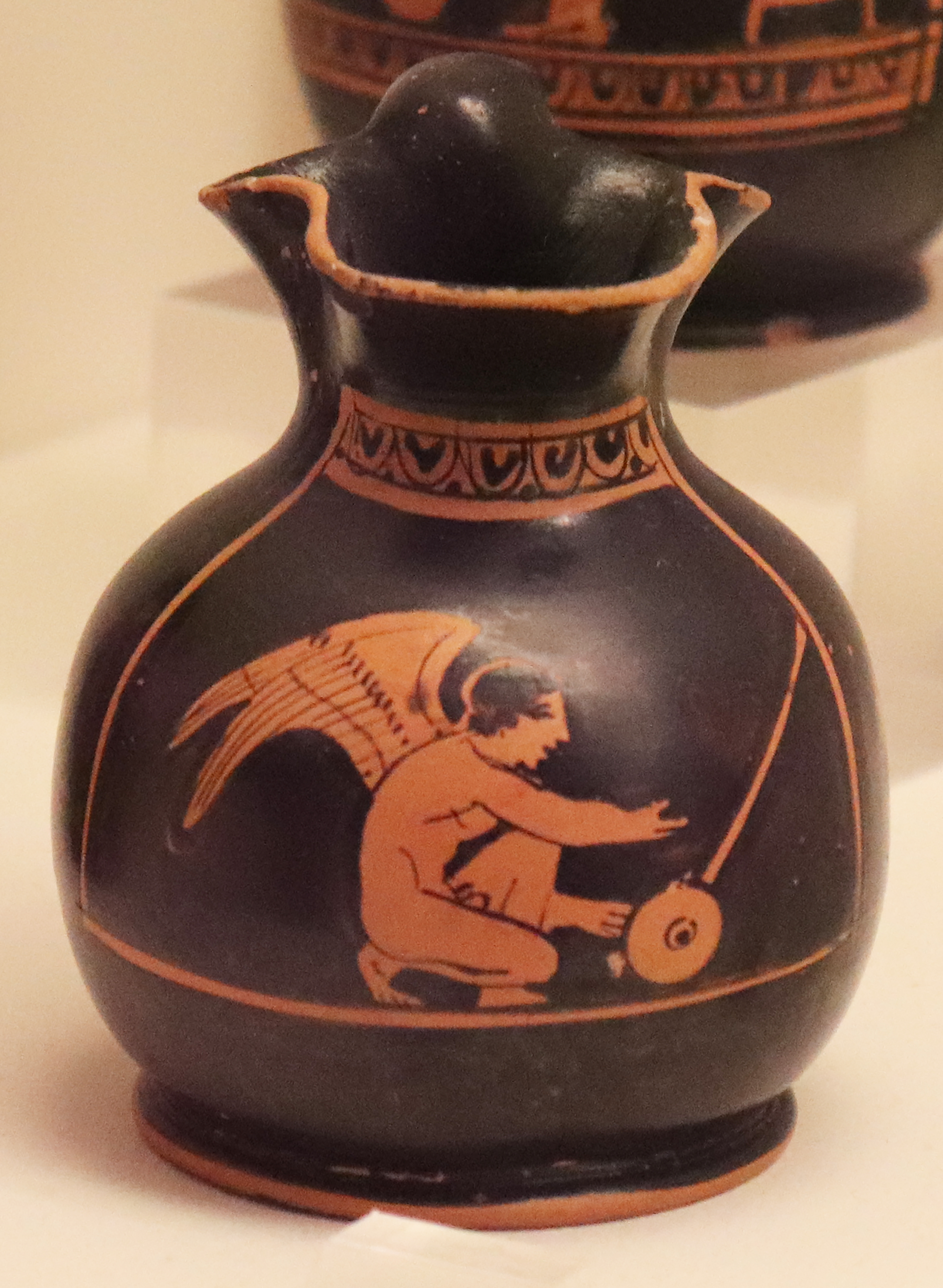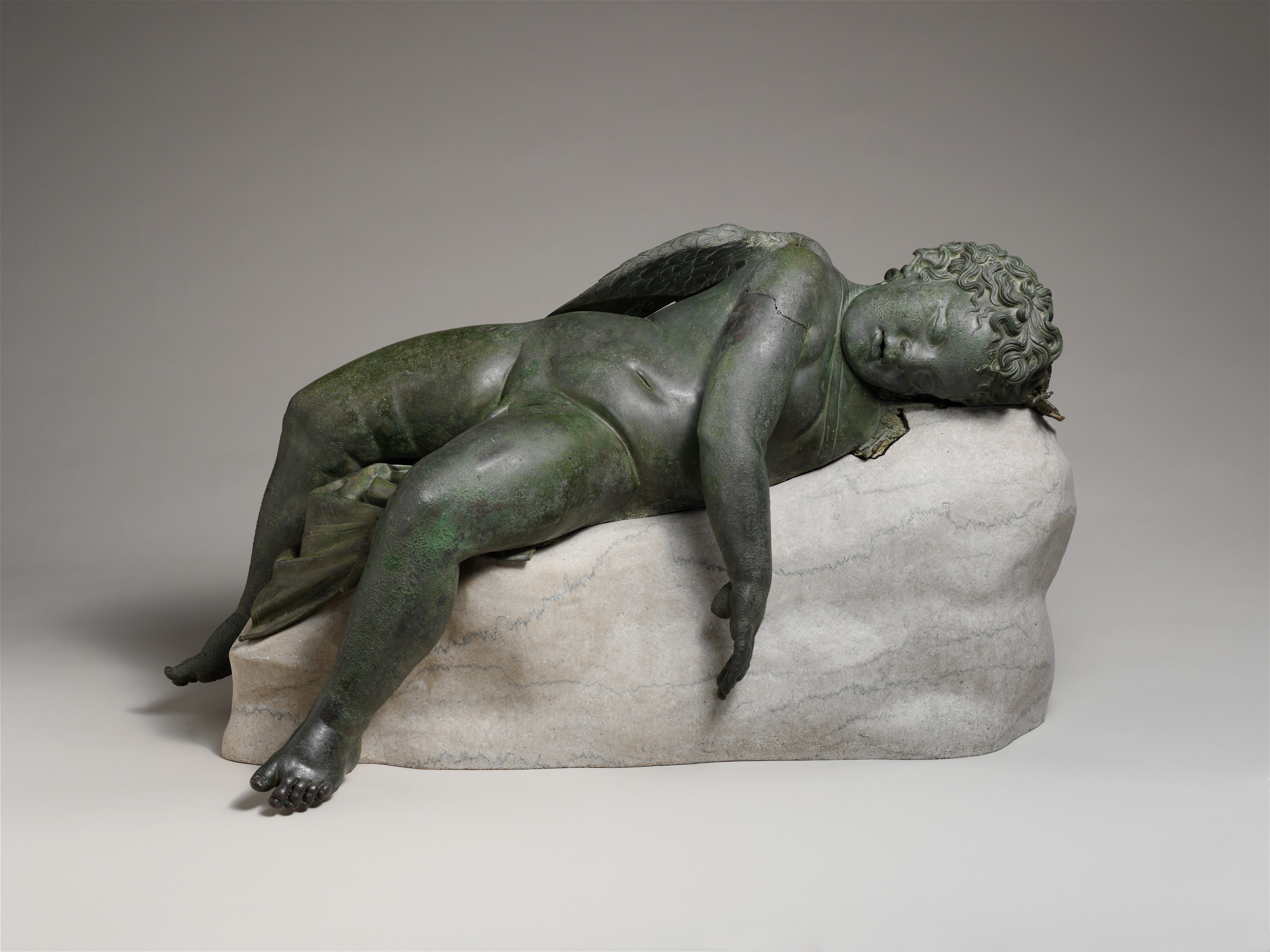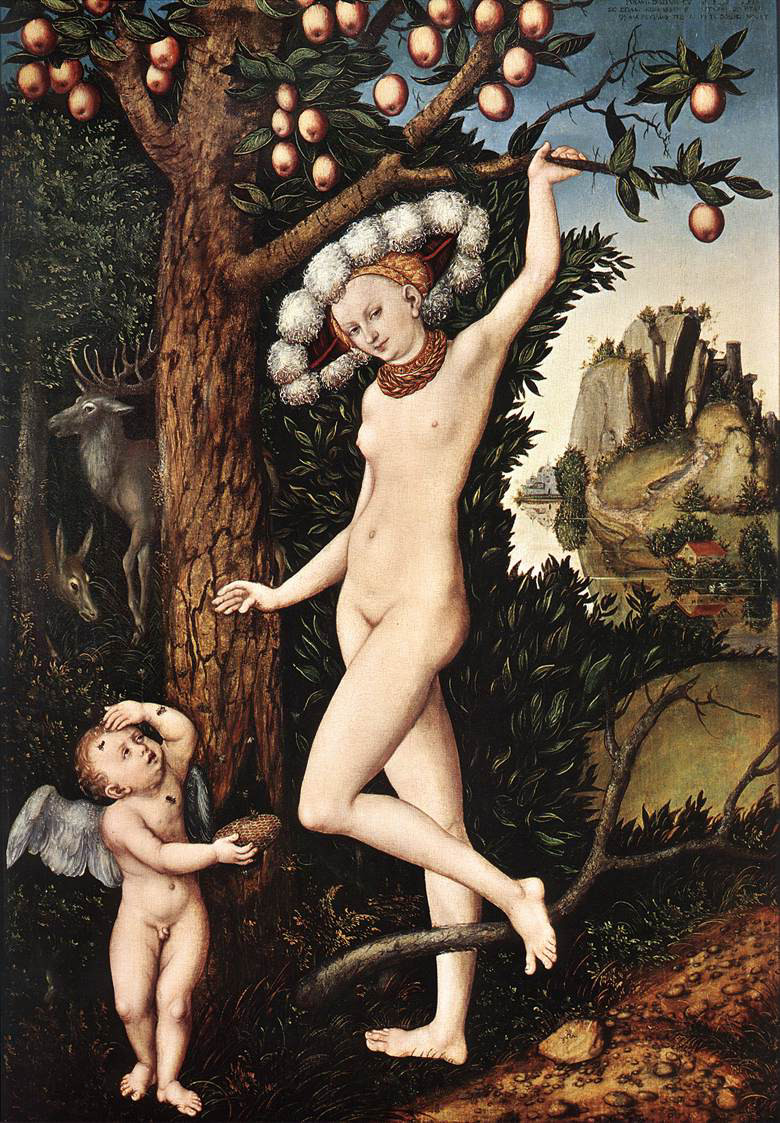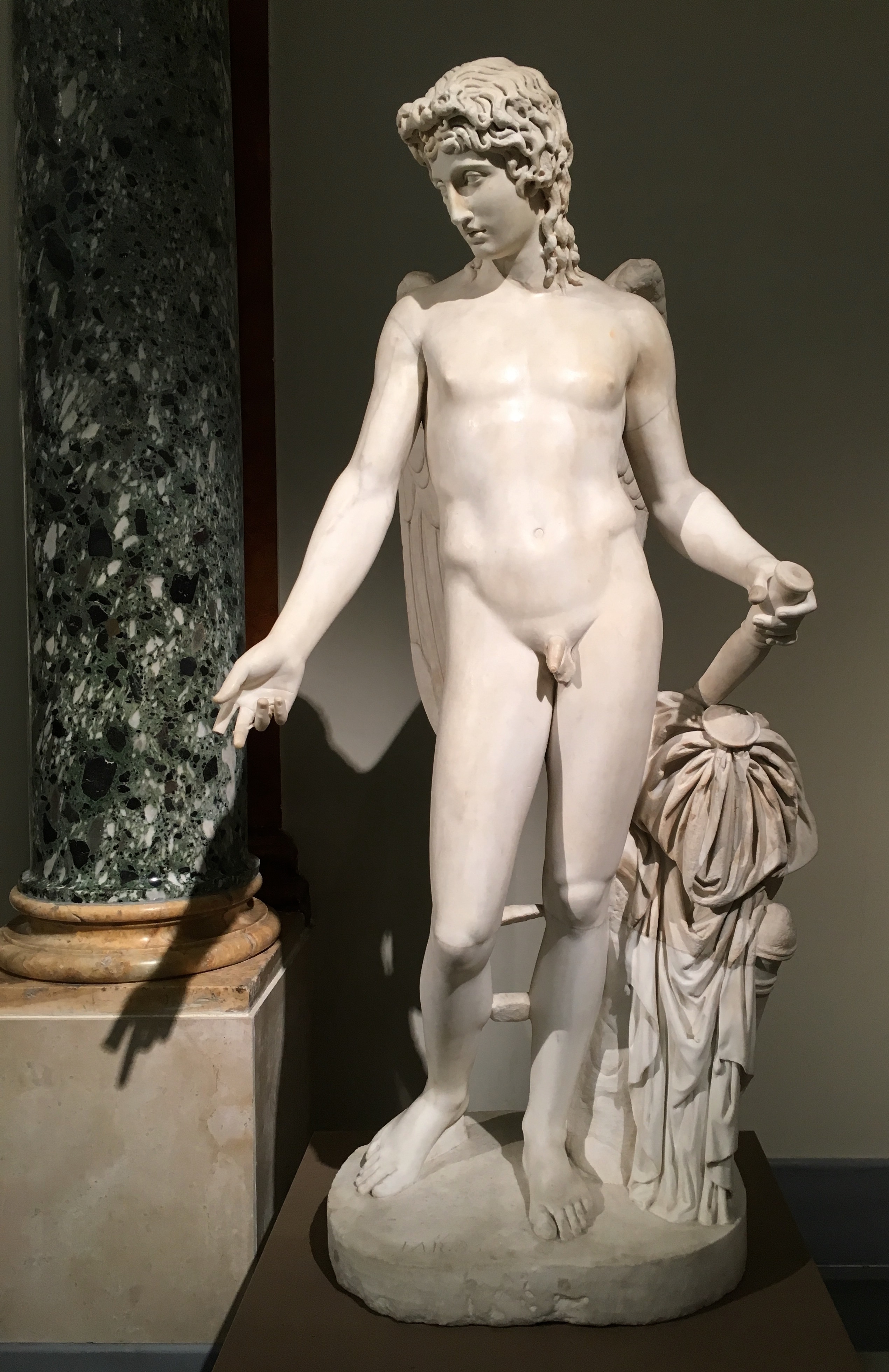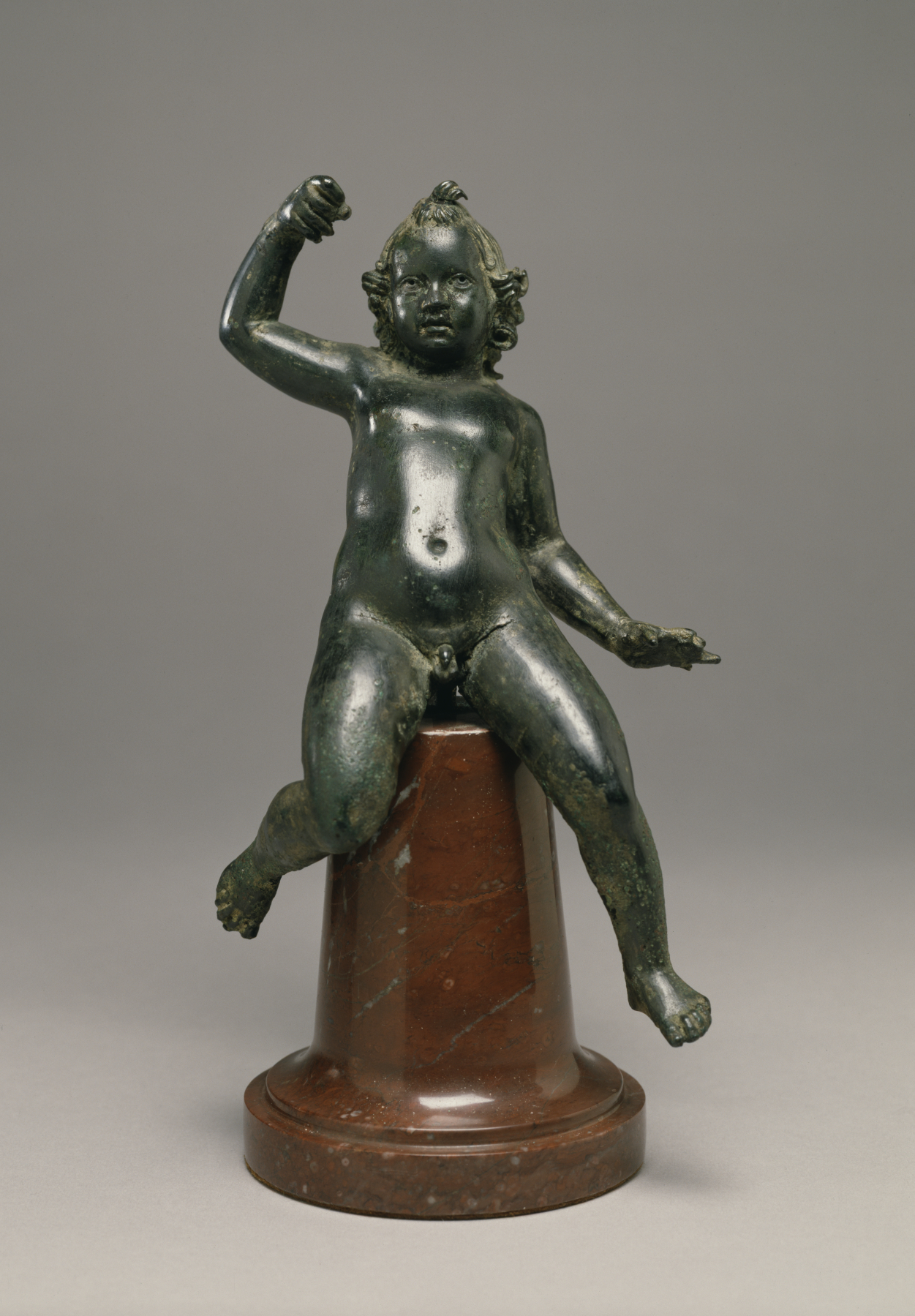Eros (Greek deity)
Enlarge text Shrink textIn Greek mythology, Eros (UK: , US: ; Ancient Greek: Ἔρως, lit. 'Love, Desire') is the Greek god of love and sex. His Roman counterpart is Cupid ('desire'). In the earliest account, he is a primordial god, while in later accounts he is described as one of the children of Aphrodite and Ares and, with some of his siblings, was one of the Erotes, a group of winged love gods. He is usually presented as a handsome young man, though in some appearances he is a juvenile boy full of mischief, ever in the company of his mother. In both cases, he is winged and carries his signature bow and arrows, which he uses to make both mortals and immortal gods fall in love, often under the guidance of Aphrodite. His role in myths is mostly complementary, and he often appears in the presence of Aphrodite and the other love gods and often acts as a catalyst for people to fall in love, but has little unique mythology of his own; the most major exception being the myth of Eros and Psyche, the story of how he met and fell in love with his wife. Eros and his Roman equivalent Cupid, are also known, in art tradition, as a Putto. The Putto's iconography seemed to have, later, influenced the figure known as a Cherub. The Putti (plural of Putto) and the Cherubim (plural of Cherub) can be found throughout the Middle Ages and the Renaissance in Christian art.(pp 2–4) This latter iteration of Eros/Cupid became a major icon and symbol of Valentine's Day.
Read more on Wikipedia >
 Personality
Personality




